"Design is about form and art is more about ideas" says David Shrigley
As his giant thumbs-up sculpture Really Good is unveiled in Trafalgar Square, David Shrigley explains how his work straddles art, graphics and cartoons (+ interview + slideshow).
From a Scottish football mascot to a spoken-word album, the Turner Prize-nominee has refused to stick to any one creative discipline.
His crude and distinctive hand drawings, which make funny and often dark comments on everyday life, have been turned into T-shirts, crockery, stationery and even political posters.
Functional items such as these are usually the preserve of designers but Shrigley brushed off the observation.
"I don't see myself as a designer necessarily," he told Dezeen. "I think art and design are two different things. Design is about form and art is more about ideas. Not all art, but as a rule."
With his sculpture of a huge hand with a bizarrely elongated thumb unveiled today on the Fourth Plinth in Trafalgar Square, he spoke to Dezeen about about his work.
The project to design a large-scale piece for the empty stone plinth in the square is one of the UK's most prestigious public art commissions and has previously been filled by world-class artists including Marc Quinn and Antony Gormley.
Shrigley told Dezeen that didn't expect to be given the commission and as a result his proposal was "a bit ridiculous".
"My explanation was written from the point of view of some kind of crazy political, policy statement, which said that if you say everything is good then it will act as some self-fulfilling prophecy and make London, the UK, the world a better place by doing that," Shrigley said.
Shrigley – who has been vocally anti-Brexit – acknowledged there was a danger that this 10-metre-high gesture of approval could be misinterpreted and appropriated.
"I have jokingly said when I've spoken to journalists about it recently that it means whatever you want it to mean, but it doesn't mean that; everything except an endorsement of Brexit, or right-wing political ideas," he said.
Shrigley, 48, was born in Macclesfield, studied at Glasgow School of Art, and now lives and works in Brighton. He was nominated for the prestigious Turner Prize in 2013.
"I have made illustrations in the past and my drawings could be considered to be cartoons," said Shrigley. "But then cartoonists don't generally get the Fourth Plinth commission."
Read the edited transcript from our interview with David Shrigley below:
Olivia Mull: Tell me about the ideas behind your Really Good Fourth Plinth sculpture and how it came about.
David Shrigley: The commissioning process came about about four years ago. They ask a group of artists to submit a paper proposal and a drawing. At the time I submitted mine, I didn't anticipate that I would actually be given the commission. So with that in mind, my proposal was a bit ridiculous.
I had made a few drawings of hands with really long thumbs – one drawing in particular that says "everything is good". It got used on T-shirts and greeting cards. I kind of like that idea, and I guess it's stupid, that a thumbs-up is a universal gesture of approval, and therefore if the thumb is a bit bigger, it must be an even greater approval.
My explanation for the proposal was written from the point of view of some kind of crazy political, policy statement, which said that if you say everything is good then it will act as some self-fulfilling prophecy and make London, the UK, the world a better place by doing that.

Olivia Mull: Are you worried about how this message will be appropriated or interpreted post-Brexit?
David Shrigley: Obviously it's a ridiculous statement because if the provision of public art improves society demonstrably, then there would be a ministry for public art and the government would spend a lot more money than they do.
But having been given the commission, I suddenly had to stand by that statement somehow, and I oddly believe that to some extent. I thought about the fact that, as an artist, you have to believe that your work makes the world a better place on some level – even if the content matter is quite dark or very critical of society. I feel that way about my work. So in that sense the work is both ironic and sincere at the same time.
So with Brexit and things being a bit of a mess at the moment, I suppose the other side of that coin is that it's an endorsement. It could be seen as an endorsement for things that are already happening i.e. Brexit. I don't think you have to delve very far into my social media output to realise that I was very much against leaving the EU.
Olivia Mull: How do you think Brexit will effect the creative industries in the UK?
David Shrigley: It's very difficult to know what will happen but my main objection to leaving the EU was that the motivation behind it is about an aspiration that I don't approve of, while the EU itself represents one that I do approve of, i.e. cooperation between nations and the fact we are better together in sharing common goals.
To me, the fact that the EU is very inefficient at actually doing that isn't a good enough reason to be leaving it. I think that motivation and the rejection of that kind of aspiration doesn't bode well for the arts.
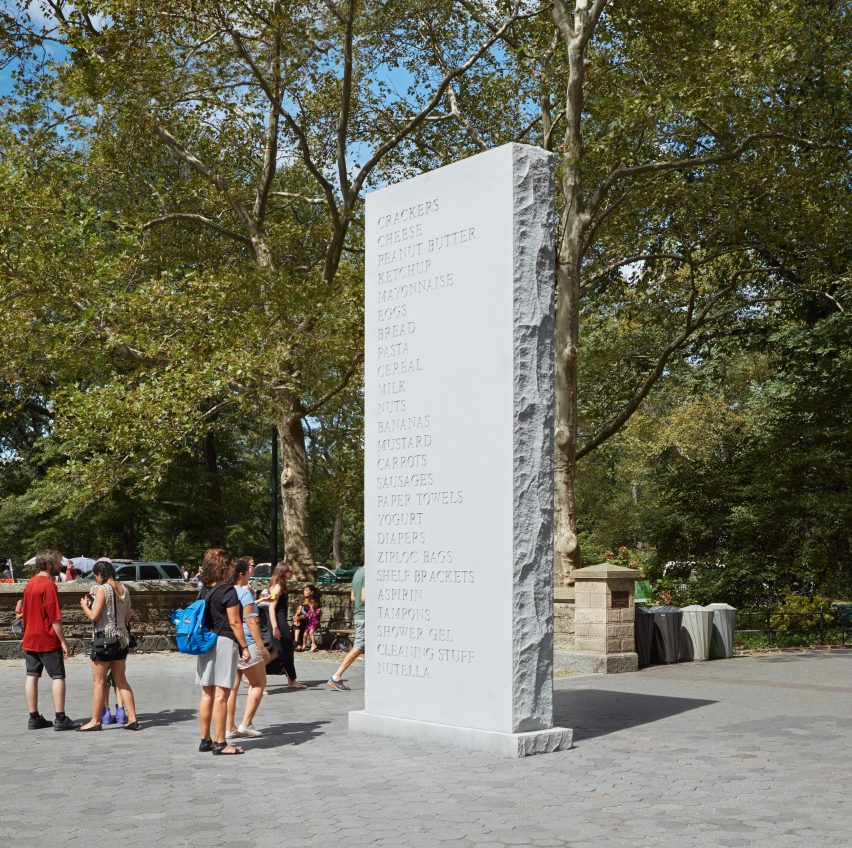
Olivia Mull: How do you feel about putting a massive thumbs-up alongside the previous commissions, which have been mostly serious?
David Shrigley: Hans Haacke's piece [Gift Horse, a horse skeleton that occupied the Fourth Plinth prior to Shirgley's piece] was commissioned at the same time as mine and I was very aware that he'd written a press release himself about his own work. He had tied it all up and there wasn't really any room for misunderstanding what the piece meant.
But with mine, everything is not tied up at all. I was acutely aware that there's room for it to mean something completely different. The nature of the statements I make is that they're ambiguous, deliberately ambiguous; they exist between metaphorical and literal statement. That's my terrain I suppose as an artist.
And the danger of things being misinterpreted is part of the excitement of making a public art. I have jokingly said when I've spoken to journalists about it recently that it means whatever you want it to mean, but it doesn't mean that; everything except an endorsement of Brexit, or right-wing political ideas.
Olivia Mull: Would you be hurt if it was interpreted like that?
David Shrigley: I say that ironically because I'm not in control of that, and whilst there is a blurb to be read near the piece, people tend not read it and just see the piece for what it really is.
Trafalgar Square is – more than any other space in London even, and certainly in the country – a space that is frequented by everybody in the world at some point. It's impossible to anticipate how people from here, there and everywhere will view it. I think that's the nature of public art and the Fourth Plinth and what makes it a really exciting opportunity.
Obviously that is perhaps a problem for Hans Haacke but it isn't for me, I kind of embrace the idea. For me the work is a proposal. I think that's very much how I go about making artwork, in that the meaning and the resonance they have comes together after the work is made and displayed. I don't always have a lot of concrete expectations as to what will happen.
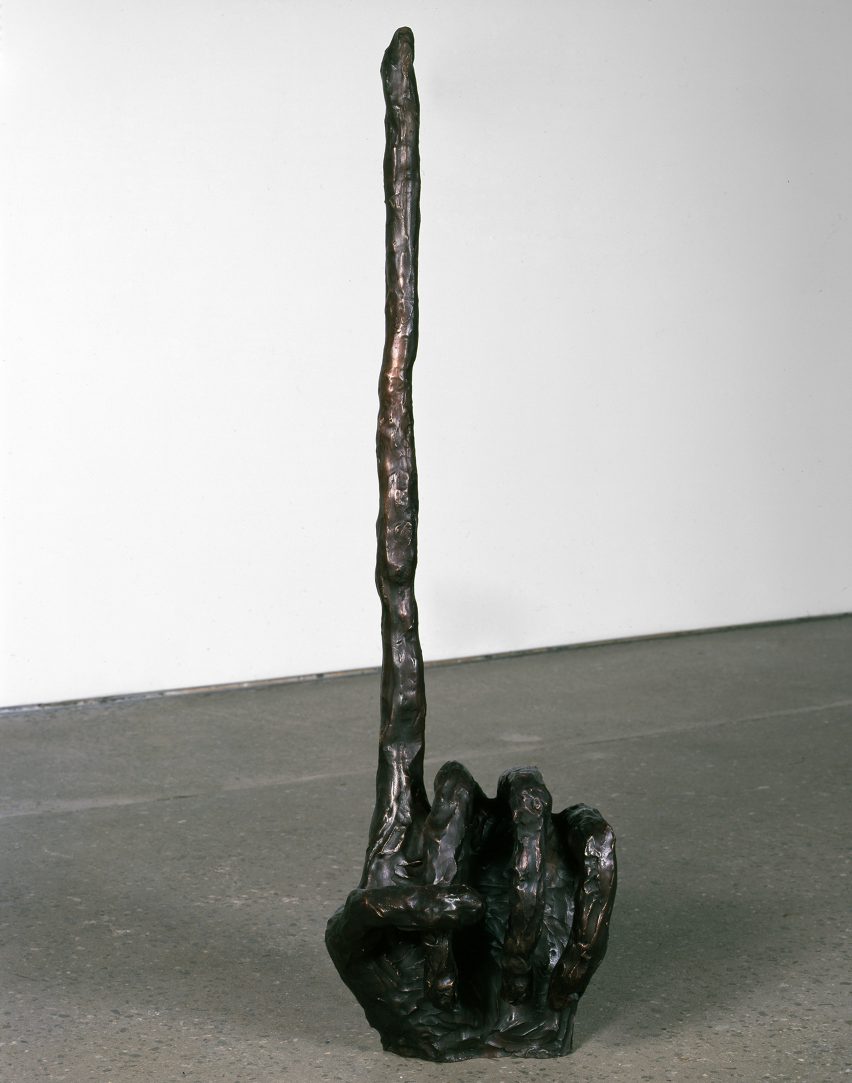
Olivia Mull: Would you design a giant landmark like Anthony Gormley's Angel of the North next?
David Shrigley: I guess it would be nice to do something like that but I don't necessarily feel that the piece in Trafalgar Square or the piece that I made in New York qualifies me to do that. Because whilst this is a huge statement, and it has a huge presence, it is only there for a year and a half, and then there will be another artwork, which will function very differently.
In that sense, Gormley's Angel of the North has to address and accept a very different set of problems. What is great about it is that very quickly people stop seeing it as an artwork and they see it as a landmark.
It represents a place and something very different that Gormley stopped being in control of a long time ago. It will still be there a long after Gormley, you and I are gone probably. That's very exciting.
Olivia Mull: I've heard you described in very different ways – as a graphic designer, an artist, an illustrator and a cartoonist. How do you define yourself and does it matter?
David Shrigley: No, I don't think it really matters that much. I think if you want a more municipal overarching title for what I do, artist is probably the more accurate one, even though I have made illustrations in the past and my drawings could be considered to be cartoons.
I think illustrator is perhaps a more difficult definition in that illustration its something quite specific. An illustration illustrates an idea, brief or text. But cartoonist is certainly fine. But then cartoonists don't generally get the Fourth Plinth commission.
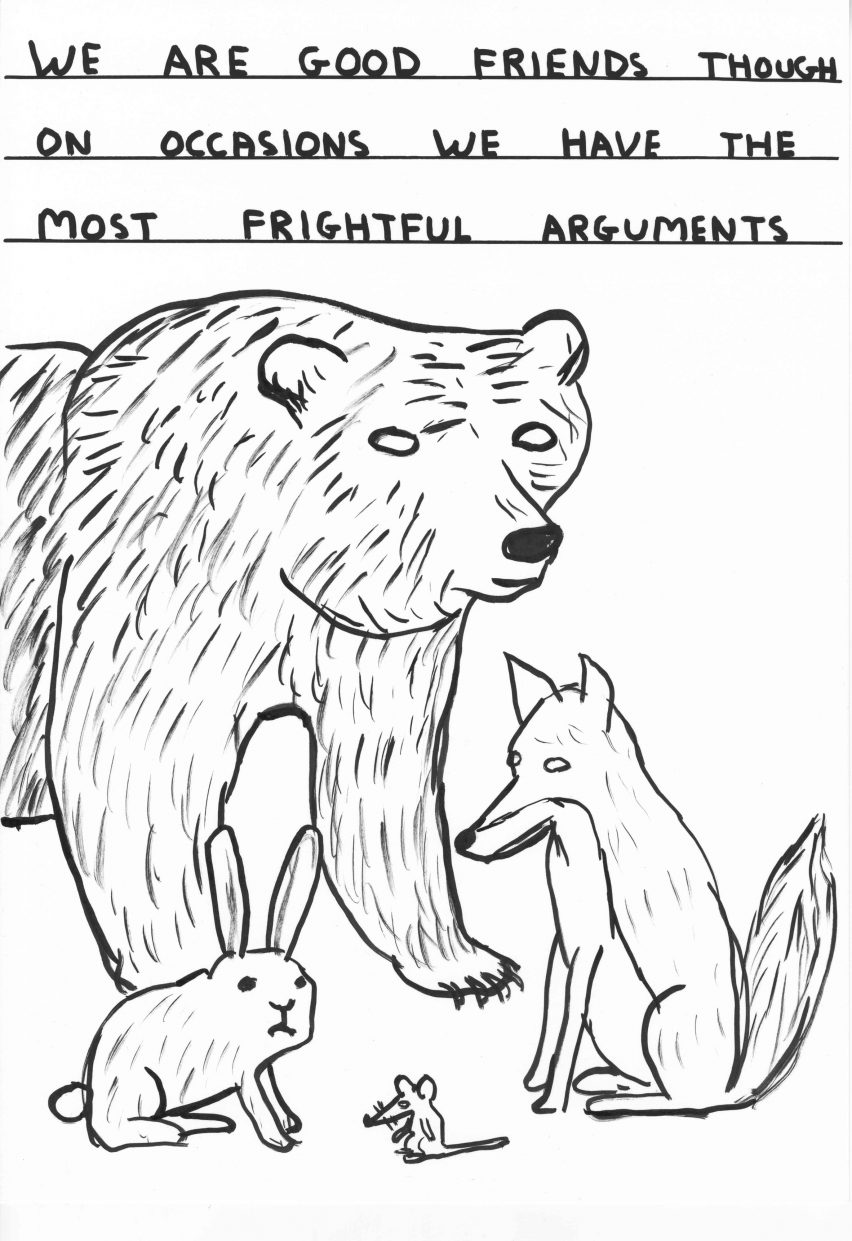
Olivia Mull: You have designed a collection for Tiger, the LondonIsOpen poster and even a mascot for a football team. How do you feel about creating things that are more traditionally the preserve of designers?
David Shrigley: I see everything as a project and an exercise if you like. You're given a brief and you respond to that. So the LondonIsOpen poster for example is a piece of illustration. Because I've been working with the GLA for the Fourth Plinth project, they just asked me if I'd like to participate.
But I didn't quite realise they would take my thing that I did in an afternoon and it would be splashed all over the shop. I was quite taken aback by that but obviously very pleased – I don't necessarily think it's something that I'm particularly good at.
But I don't see myself as a designer necessarily. I plough a certain furrow within graphic communication, which is about crude drawings with text and some slippage between image and texts, and that's the thing that I'm interested in. And also about certain attitude toward drawing and making images, which is informed more by Marcel Duchamp than by the greats of graphic design.
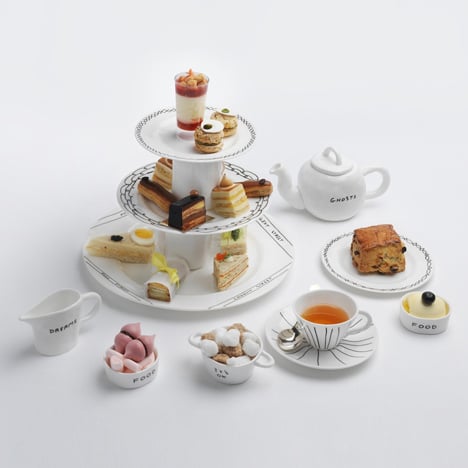
Olivia Mull: Do you think you are most often defined as an artist because your work is very funny and it is about ideas, whereas design tends to be very serious and functional?
David Shrigley: I wouldn't say that. I think art and design are two different things. Design is about form and art is more about ideas. Not all art, but as a rule. Designers are interested in the form of things and the way form can be used to convey a message or to fill a certain purpose, whereas artists are generating the idea in the first place and then figuring out how to convey them.
I think it's better to have designers designing stuff than artists. I think that all the stuff that I designed is alright. I like the crockery that I designed in Sketch, but I don't necessarily want to eat my dinner off it. I think there's nicer stuff out there that designers have made.
I went to art school and a lot of my friends gravitated towards design whereas I felt, maybe more arrogantly, like I had something to say that people needed to listen to. I'm not quite sure what it was and still not quite sure what it is, but I still want to say it anyway.
When I do book signings, I'm very aware that there are people who don't see the work as fine art, but that's great. I'm happy it can be seen through a different lens by different people. I think also that the more exposure I have as a creative person to different disciplines, the better it is.
I'm happy in the world of fine art, because you can kind of do whatever you like, whereas you can't in the world of design as there's always a client saying they don't like something you've done. I guess I have the same attitude I did at art school. I don't really think about why someone asks me to do something, I just say yes. And I always feel like it's their responsibility for having asked me if I do it badly.
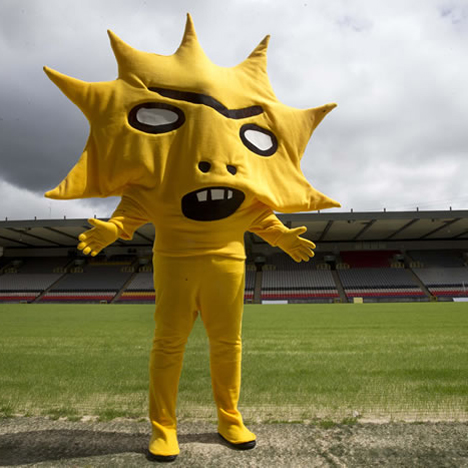
Olivia Mull: What are your favourite and least favourite projects you've been asked to do?
David Shrigley: I think you learn something from every project. Hopefully the thing you learn is not just that you don't ever want to do that again, although I have learnt that from doing certain things.
I've done some community public-based projects which end up being really bureaucratic and very diluted by having to collaborate with people who don't really like art. And conversely the best things I've done are where you collaborate with people who do like art or who do something creatively that you can't do.
For example, I made a record recently with [Scottish musician] Malcom Middleton, where I wrote a lot of lyrics and recorded actors speaking my words and Malcom added the musical element. That was great because Malcom is a great musician who does something that I can't do. I'm not sure I do something that he necessarily can't but I do have my own take on it.
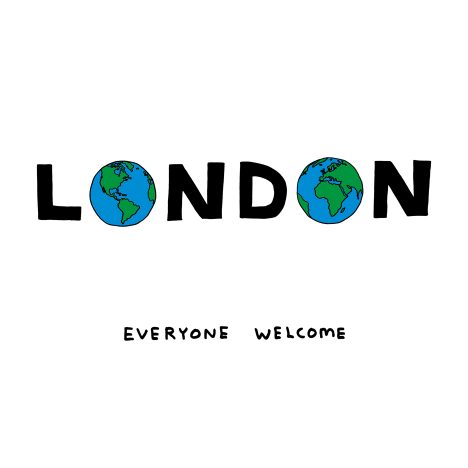
Olivia Mull: Tell me about how you started out.
David Shrigley: I'm one of those kids who was quite happy as a child to be left alone with a pencil and a piece of paper, and I would occupy myself. I liked making sculptures out of cardboard boxes from Tesco.
I liked art at school and figured that was the thing I really wanted to do. I studied at Glasgow School of Art, hung around in Glasgow when I left and lived in Glasgow for 27 years. Then I moved to Brighton last year.
I think the interesting thing about my career is that I didn't think it was possible to ever have a career as an artist. Not because I wasn't good enough, but because I didn't actually realise that that was permissible or that there was any such occupation. I thought that I would have to do something else, but was pleasantly surprised that I didn't.
Olivia Mull: Why do you think that you have been successful as an artist?
David Shrigley: Good luck I suppose. Being in the right place at the right time, doing a certain thing that occupies a certain space that people respond to. I know a lot of artists of my generation who haven't really had much success who I think are hugely talented.
I never intended to be the graphic artist that I am. When I left art school I didn't have a studio or any resources. I could make drawings at home in my shared apartment and then I started publishing books as a means to disseminate what I did in the days prior to the internet.